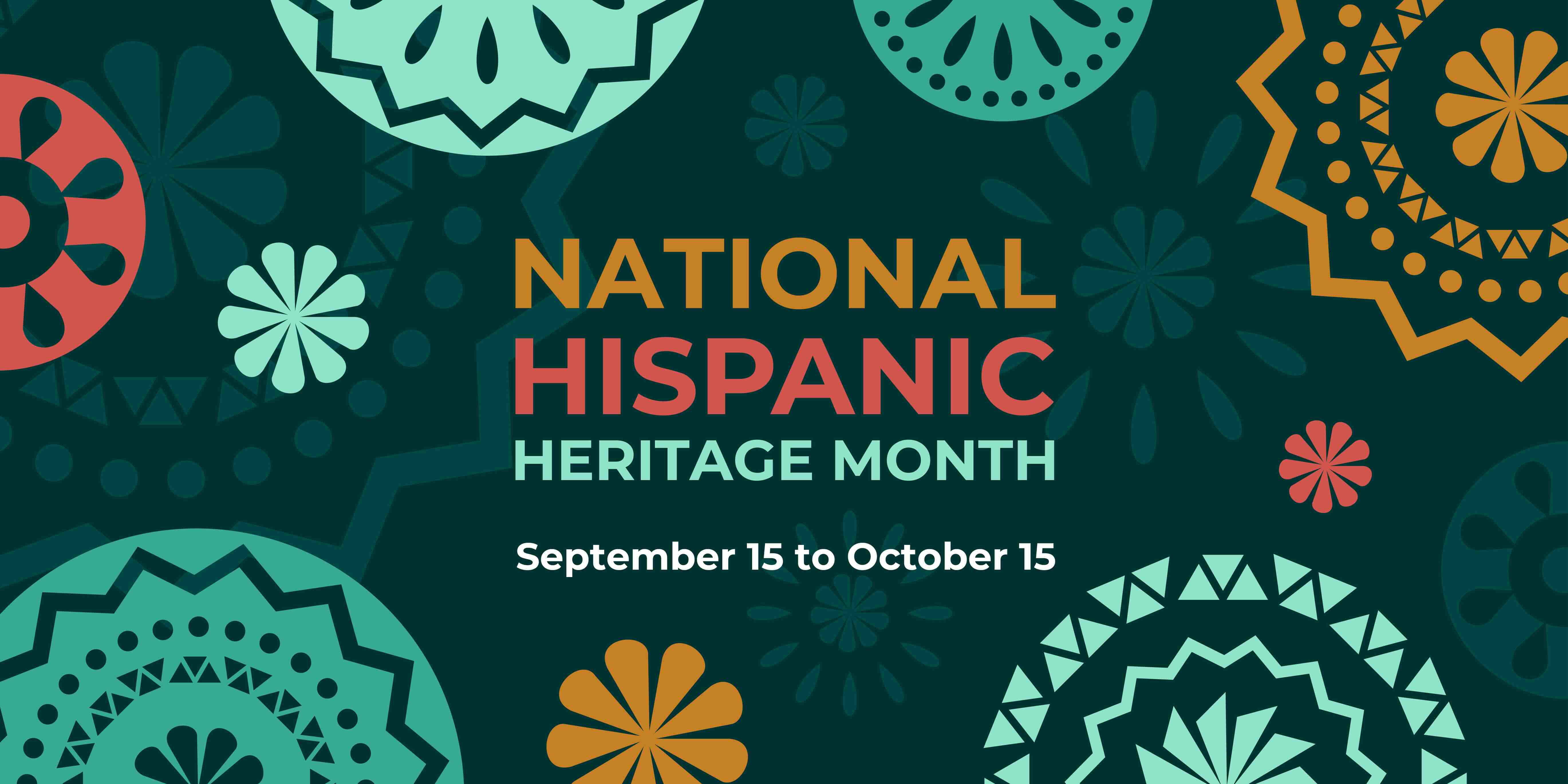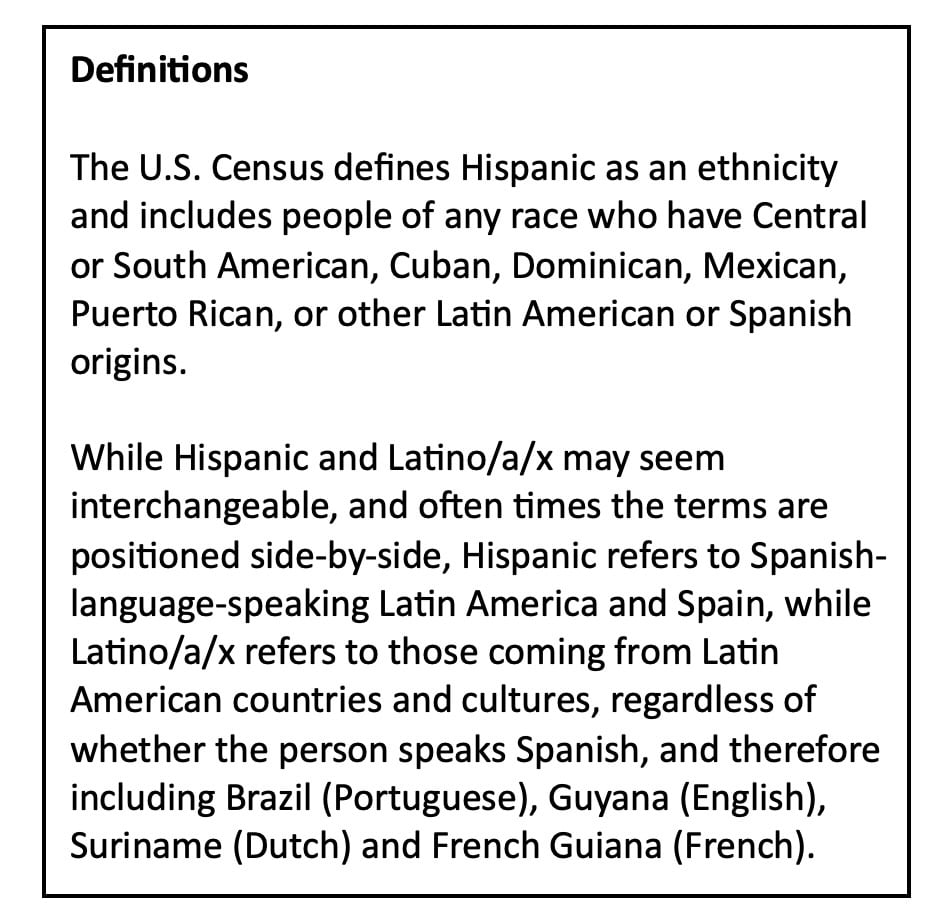Reflecting on Hispanic Heritage Month, my identity and a career in ID
Facebook Twitter LinkedIn Email Hispanic Heritage Month is celebrated Sept. 15 to Oct. 15 and honors the cultures and contributions of Hispanic and Latino Americans as we celebrate heritage rooted in all Latin American countries.
Hispanic Heritage Month is celebrated Sept. 15 to Oct. 15 and honors the cultures and contributions of Hispanic and Latino Americans as we celebrate heritage rooted in all Latin American countries.
As a Latina immigrant and a mother of two mixed children, my identities frequently are front and center in everything I do. I once heard the statement that “everything south of the border is the same,” which left a mark on me. The words highlighted the need to educate myself and others on who we are as an ethnic group and as individuals.
In 2020, Hispanics or Latinos represented the second largest racial or ethnic group in the U.S., representing 18.7% of the population of all ages, with the vast majority being children (25.2% of children under 5 year and 25.8% of children 5-17 years) and young adults (23.6% of adults 18-24 years and 21.5% of adults 25-34 years). The Hispanic population is expanding at a substantially faster rate than others, and population projections estimate that 27.5% of the total U.S. population will be Hispanic by 2060.
The diverse culture in Central and South America is so rich and vastly different that lumping them all together, however, is an enormous mistake and takes away each community’s individuality. I wonder what boxes my kids will check when it’s their turn to self-identify their ethnicity.
 Remembering my roots
Remembering my roots
Sometimes I look back at my personal statements for residency and fellowship applications to remind me where I have been, where I am and where I am going. Both statements start with the same sentence: If I told you the dream of my early life was to practice medicine in the United States, this would not be a true statement. This will always hold true, and reading these words today revives my passion for infectious diseases, medical education, teamwork and service.
It also reminds me of my roots and early struggles as a Brazilian immigrant and a first-generation medical student embarking on a new adventure across the globe. Moving to the U.S. changed my life. Today, I have two small children right here and two aging parents far away. Oh, the aging parents … I am so grateful and privileged to have them, and it’s so incredibly difficult to be far away from them.
During residency, my program director paged me one day and requested that I transfer my pager to a colleague for cross-coverage during my ICU rotation. While unsure what was about to happen and somewhat fearful of being in trouble, I complied. The task at hand was to deliver a new HIV diagnosis to a patient I had never met before. My immediate thought was: Why me? It felt like a punishment.
Impacting my community
I soon understood the reason for the request: I was a Brazilian immigrant who happened to be a resident committed to a career in infectious diseases. In front of me was another immigrant, another Brazilian, who I could talk to in plain and simple language, with shared cultural beliefs. I could explain the great prognosis she had and the continued support we were to give her. After many tears and rounds of explanations, I told her she was going to have a normal life. It had to be me. It felt like a gift. I will never forget that day, when I realized the impact I could have on my community, on people just like myself.
According to the Association of American Medical Colleges 2023 faculty roster, 12,494 out of 201,112 full-time faculty at all U.S. medical schools identify as Hispanic, Latino, or of Spanish origin, representing 6.2% of all full-time faculty. Meanwhile, medical school matriculants who identify as Hispanic, Latino, or of Spanish origin comprised 12.7% of all new medical students for the 2023-2024 academic year.
Last summer, I celebrated the 20th anniversary of my graduation from medical school. I had the privilege of traveling with my family for a reunion back in Brazil. While I felt so blessed, the struggles continue, and my conflicting identities flourished before, during and after the trip: I am too Latina to be American and too Americanized to be Latina.
Where do we go from here?
There is a clear gap between who we are as providers and the population we serve, and it’s time to close that gap. There are numerous benefits of racial and ethnic concordance between patient and provider, including higher patient satisfaction, improved survival-related outcomes, improvements in birthing mortality and improved health care use and lower expenditures.
While there are growing resources focused on Hispanic and Latinx students and faculty, such as the Latino Medical Student Association and the National Hispanic Medical Association, respectively, infectious diseases don’t observe national boundaries. The need for physicians and other health care providers who understand and connect with the culture is paramount. At the height of the COVID-19 pandemic, our communities were often quickly blamed for the rapid spread of the virus, while many lacked the understanding of our multigenerational households and physically expressive culture.
We care for our elderly the way they cared for us, and we hug and kiss our loved ones – not doing that would be devastating for our people. Doing that kept us together and moving forward. We adapted. We fought. We are stronger now.
The impact of culturally sensitive care is not easy to measure, but it will eventually help us all and improve the health of each individual and their communities. As I reflect on my career and Hispanic Heritage Month, I embrace who I am with pride and determination.
Additional references
U.S. Census: About the Hispanic Population and Its Origin
Mass Legal Services: The Difference Between Hispanic and Latino
Britanica: What’s the Difference Between Hispanic and Latino?


